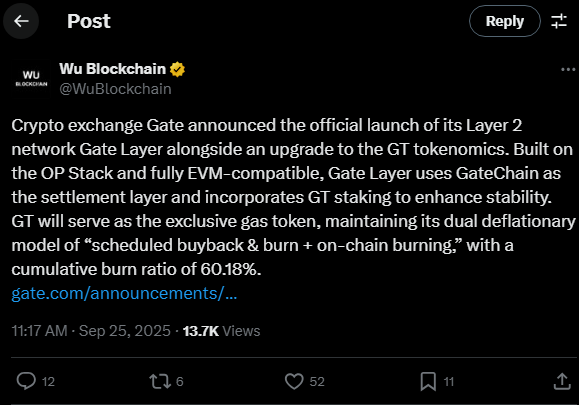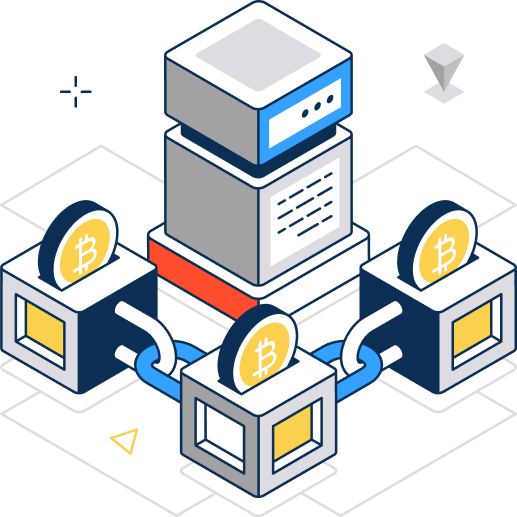

Global cryptocurrency exchange, Gate.io, announced the rollout of its Layer 2 scaling solution, Gate Layer, alongside a major upgrade in GT tokenomics. By doing so, the exchange basically commits itself to improving scalability and user experience as well as providing long-term token value, while also being in line with industry-standard Ethereum scaling frameworks.

Source: X Platform
Gate Layer built on OP Stack is completely EVM compatible and can communicate with all other Ethereum-based applications. With such a layout, the developers are allowed to move the dApps without causing any interruption to the operations, besides they get to enjoy faster transactions and lower gas fees. The native blockchain of GateChain, the one belonging to Gate.io, will be the settlement layer to support the network’s security and finality.
The deployment of GateChain with Layer 2 design makes Gate Layer a scalable, safe, and developer-friendly environment and thus a perfect fit for the apps in the areas of DeFi, gaming and NFTs.
The changes in GT Tokenomics make the gas token GT the only token used in the Gate Layer. The token keeps its one-of-a-kind dual deflationary model intact via:
Since Ethereum scaling solutions are becoming more popular, Gate.io’s Gate Layer is a strong competitor for the Layer 2 market. By using the OP Stack, it is following the same path as Optimism and Base, which means that it is compatible with the other parts of the Ethereum infrastructure.
The move to better GT tokenomics solidifies the asset as a utility token and also a deflationary holder of value within the Gate ecosystem.
With the release of Gate Layer and GT’s new tokenomics, Gate.io have demonstrated their visionary strategy amidst the fluctuating crypto market. Through the integration of scalability, EVM compatibility, and eco-friendly tokenomics, Gate.io is not only solidifying its ecosystem but also allowing users and developers to access cutting-edge resources for the upcoming Web3 expansion.
Enter your email → Get instant download.
